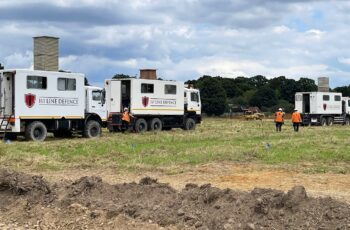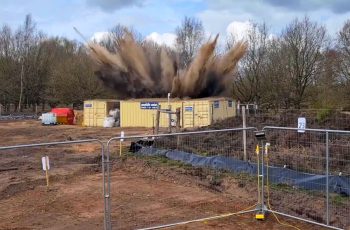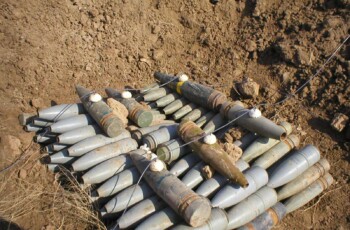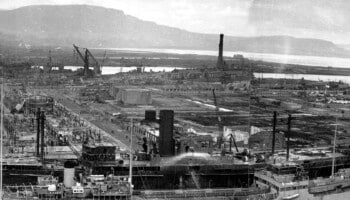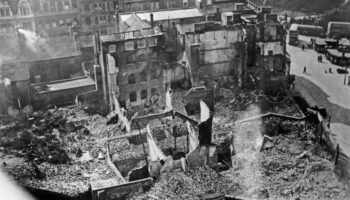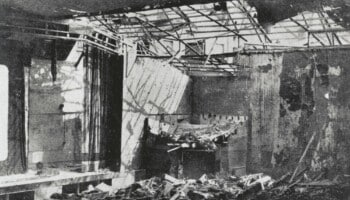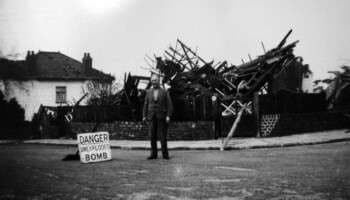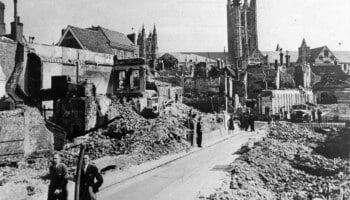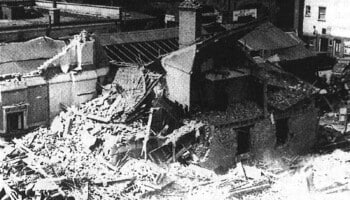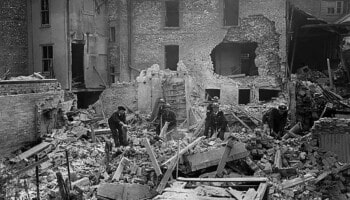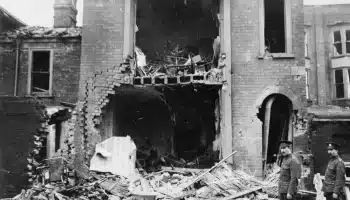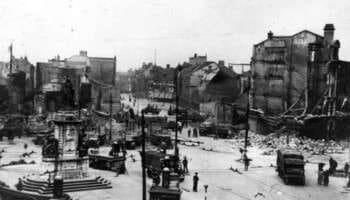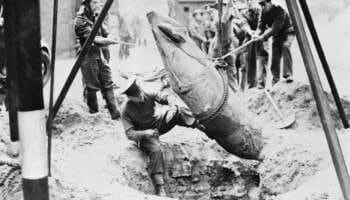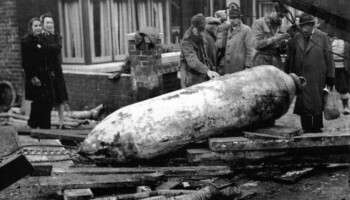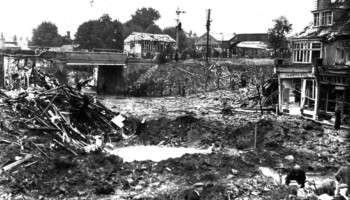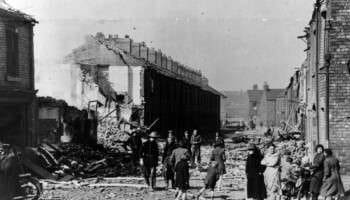Home » Resources » UXO City Guides »
UXO City Guide
Home Office Bombing Statistics for Exeter
Record of German Ordnance dropped on the County Borough of Exeter
High Explosive Bombs (All types)
304
Parachute Mines
6
Oil Bombs
0
Phosphorus Bombs
0
Fire Pots
0
Pilotless Aircraft (V-1)
0
Long-range Rocket Bombs (V-2)
0
Weapons Total
310
Area Acreage
4,721
Number of items per 1,000 acres
65.7
Why was Exeter targeted and bombed in WWII?
As a major city near the south-west coast of England, Exeter was a prominent and fairly convenient target for the Luftwaffe, with bombers flying across the channel not needing to penetrate far into the country to conduct a strategic bombing attack.
19 significant air raids were recorded on Exeter between August 1940 and 1942, resulting in 265 fatalities and almost 800 injuries1. A significant number of smaller ‘tip and run’ raids occurred throughout the war along the south coast. Exeter’s heaviest raids occurred during the so-called ‘Baedeker Blitz’, apparently a retaliation for the RAF bombing of the German city of Lubeck2. These raids did not primarily attack targets for their strategic significance, but their cultural and historic value.
Home Office Bombing Statistics for Exeter
Exeter was not as heavily bombed as Britain’s largest cities, nevertheless the County Borough sustained an overall moderate bombing density according to official Home Office bombing statistics, with an average of 65.7 items of ordnance recorded per 1,000 acres.
While Exeter’s largest raids occurred in 1942, bombing was recorded as early as August 1940. These earlier incidents were relatively infrequent in nature, until the ‘Baedecker’ raid where the city was actively targeted by approximately 40 aircraft. Bombing continued sporadically late into the war, with the final casualty occurring in autumn 1944.
Historic and culturally important buildings with no military significance in Exeter were damaged by bombing, including the Cathedral, in order to demoralise the population. Targets of strategic significance were identified across the city however, as the Luftwaffe reconnaissance photograph above illustrates.
Major Air Raid Incidents in Exeter
- 17th September 1940 – six HE bombs dropped in the area around Devon & Exeter Girls’ Training School, resulting in the evacuation of seven streets.
- 28th November 1940 – two parachute mines fall in Heavitree, killing four and injuring 26, and causing damage recorded across an enormous area – more than 20 streets.
- 23rd April 1942 – seven HE bombs and hundreds of incendiary bombs, causing five fatalities and widespread damage and fires.
- 4th May 1942 – the ‘Baedeker’ raid, in which approximately 10,000 incendiary bombs and 160 HE bombs were dropped. The raid caused 156 fatalities, with 563 injured.
- 30th December 1942 – six 500kg HE bombs dropped, killing 19 people.
Detonation of unearthed 1,000kg HE unexploded bomb in Exeter
In early 2021, a very large 1,000kg ‘Hermann’ HE bomb was discovered during excavation works next to a care home near the University of Exeter3. The bomb was deemed unsafe, and was destroyed in situ following evacuation in a 400 metre radius. Despite precautions including surrounding the bomb with more than 400 tonnes of sand, the resulting blast threw debris up to a distance of 250 metres.
Can UXO still pose a risk to construction projects in Exeter?
The primary potential risk from UXO in Exeter is from items of German air-delivered ordnance that failed to function as designed.
Approximately 10% of munitions deployed during WWII failed to detonate, and whilst authorities did search for related items, not all were encountered during the immediate post-war period.
This is evidenced by the regular discoveries of UXO across the UK – not just in Exeter. Nevertheless, in recent years numerous items of UXO have been found in Exeter – most notably the unplanned detonation of a 250kg HE along the River Yare by Southtown Road.
I am about to start a project in Exeter, what should I do?
Developers and ground workers should consider this potential before intrusive works are planned, through either a Preliminary UXO Risk Assessment or Detailed UXO Risk Assessment. This is the first stage in our UXO risk mitigation strategy and should be undertaken as early in a project lifecycle as possible in accordance with CIRIA C681 guidelines.
It is important that where a viable risk is identified, it is effectively and appropriately mitigated to reduce the risk to as low as reasonably practicable (ALARP). However, it is equally important that UXO risk mitigation measures are not implemented when they are not needed.
While there is certainly potential to encounter UXO during construction projects in Exeter, it does not mean that UXO will pose a risk to all projects. Just because a site is located in Exeter does not mean there is automatically a ‘high’ risk of encountering UXO. It really does depend on the specific location of the site being developed.
A well-researched UXO Risk Assessment will take into account location specific factors – was the actual site footprint affected by bombing, what damage was sustained, what was the site used for, how much would it have been accessed, what were the ground conditions present etc.
It should also consider what has happened post-war – how much development has occurred, to what depths have excavations taken place and so on. This will allow an assessment of the likelihood that UXO could have fallen on site, gone unnoticed and potentially still remain in situ.
Recent UXO discoveries in Exeter
Since the war, many items of UXO have been discovered across multiple cities within the UK, with Exeter no exception. See the news articles below about UXO incidents and discoveries from national and local press in Exeter.
1st Line Defence keep up-to-date with relevant and noteworthy UXO-related news stories reported across the UK, and you can browse through these articles using the buttons below.
Get UXO risk mitigation services from a partner you can trust
UXO City Guides
Got a project in Exeter? Not sure if there's a UXO risk? Need advice but not sure where to start?
If you need general advice about UXO risk mitigation in Exeter, contact us and we’ll be happy to help.
Call: +44 (0) 1992 245020 or Email: info@1stlinedefence.co.uk
Contact Us
* indicates required fields

